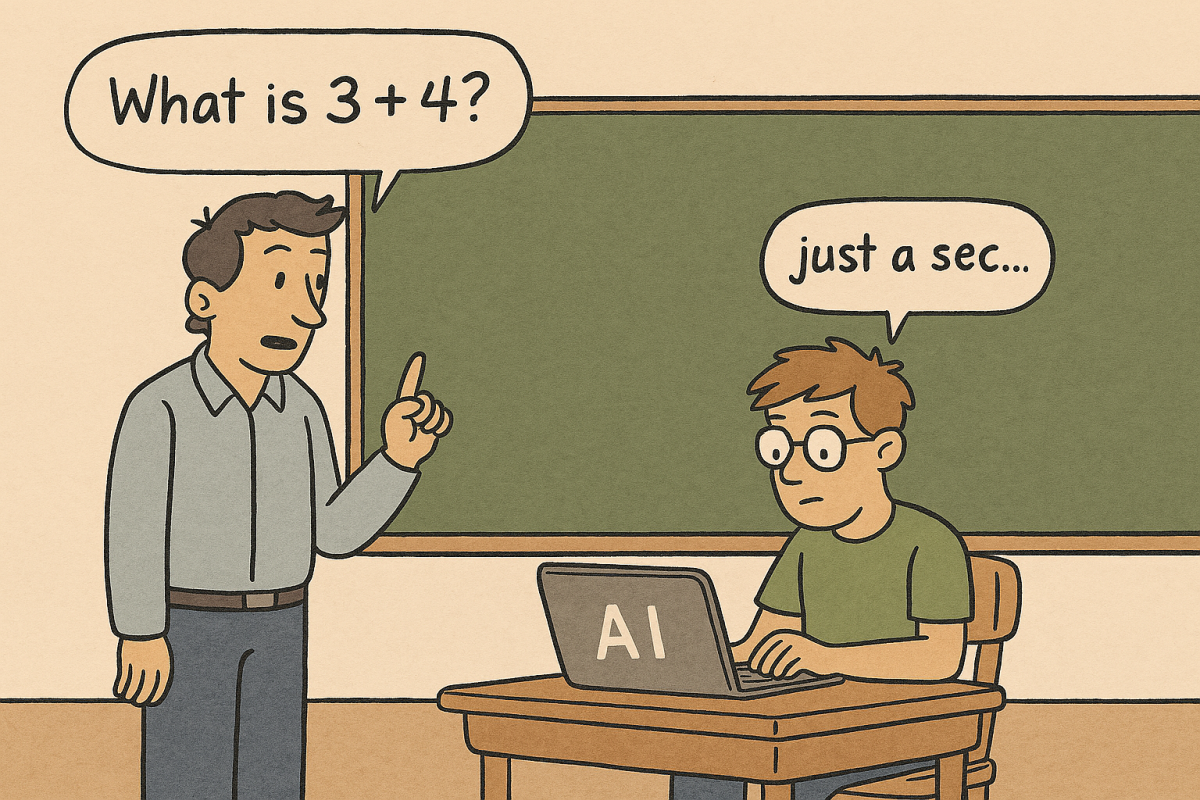While it’s now part of an exercise to write blog posts in which we reflect on our experience with AI tools, this topic has been on my mind for quite some time. I often find myself wondering: who am I without the assistance of these AI things? What is my added value?
Most interesting is that it hasn’t been long since the first consumer-facing AI tools entered our lives, and yet I increasingly hear from people, both within and beyond the university environment, that they can hardly remember what life was like before these tools existed. That’s wild, especially considering how quickly we’ve become reliant on them.
And I’m no exception. Although I was a late adopter of the technology, I now use AI regularly, across a wide range of tasks. In academic settings, I mostly use Copilot and ChatGPT for refining my ideas, generating feedback on my work, and correcting my writing, especially since English isn’t my first language. Outside of the university environment, I recently started to experiment with image and video generation tools, as they allow me to express my creativity in a completely new and faster way. In those moments, AI feels like a complementary creative partner, and using it that way is genuinely fun and empowering.
However, I also notice a growing trend: more and more people are outsourcing entire workflows to AI, from brainstorming all the way to final drafts. And honestly, I can’t blame them. The efficiency gains from automating repetitive tasks are undeniable. But as others have pointed out in their blogs as well, this shift comes at a cost. I really feel like we’re gradually offloading our human capabilities, our creativity, our critical thinking, to machines. If we continue down this path, those skills may slowly fade away.
And I feel like it’s already affecting most of us, at least I know it has affected me. It changes how we think. A part of our problem-solving ability simply gets outsourced, and we don’t always notice it happening. That’s why I’ve started to pull back a bit in how I use generative AI tools. I’m worried that if I rely too much on these tools for my day-to-day tasks, my own creative and critical thinking skills might fade. And if that happens, what do I really bring to the table in future workplaces? If I depend on machines for everything, how can others depend on me?
That’s why, currently, I am working to restore my balance between thinking on my own and seeking ‘advice’ from these tools. And I believe we all should. AI can really be a great support, but it shouldn’t take over the parts that make us human. It should solely complement us, for instance to actually BE creative. The real challenge is to keep thinking for ourselves, stay curious and critical, and make sure we’re still using our own minds, even if it is so tempting to outsource our whole existence to these machines.
What do you think, is AI a step toward empowerment in the human environment, or could it become our downfall?


